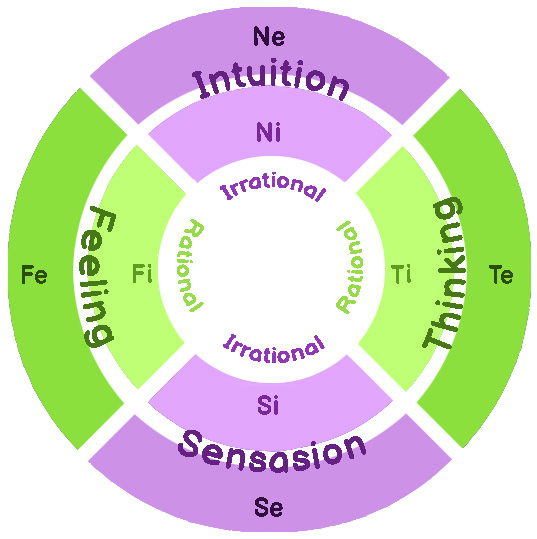Rationality/Irrationality in socionics and MBTI
 In his work "Psychological Types", Carl Jung divided all eight types into two groups: Rational and Irrational. According to Jung, a type is rational if its main (dominant) psychic function is rational, a type is irrational if its main psychic function is irrational. Jung considered Thinking and Feeling to be rational functions, and Sensation and Intuition to be irrational.
In his work "Psychological Types", Carl Jung divided all eight types into two groups: Rational and Irrational. According to Jung, a type is rational if its main (dominant) psychic function is rational, a type is irrational if its main psychic function is irrational. Jung considered Thinking and Feeling to be rational functions, and Sensation and Intuition to be irrational.
Socionics uses the same concept of rationality/irrationality as Carl Jung. The MBTI has the concept of Judging/Perceiving, which is considered to be the same as rationality/irrationality. Let's compare what is meant by the concept of Rationality/Irrationality in socionics and Judging/Perceiving in MBTI.
• Manifestations of Judging/Perceiving in MBTI (Isabel Myersʼ Clusters for MBTI Form G)
Judging – Perceiving
Spontaneity: Contrast between a scheduled and a spontaneous lifestyle.
Planning: Contrast between longer-term planning and going with the flow.
Organizing: Organizing the situation at hand, as opposed to long-term planning.
Application: Contrast between enjoying meeting the goal and finishing, versus enjoying something that catches interest; or between working for duty or pleasure.
Obligations: Contrast between being more serious or casual about meeting obligations.

